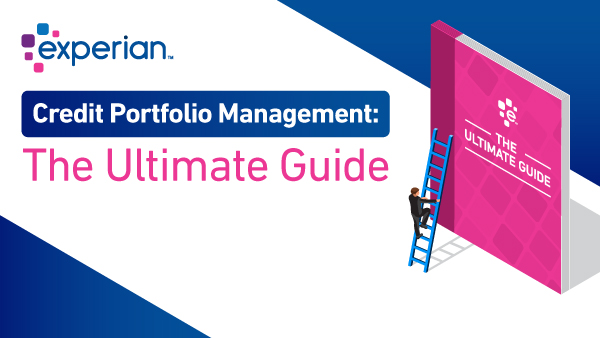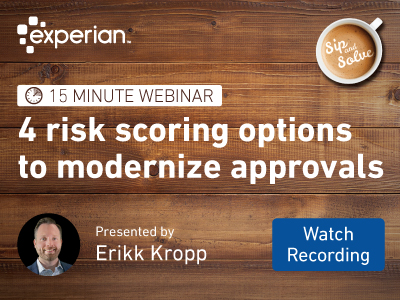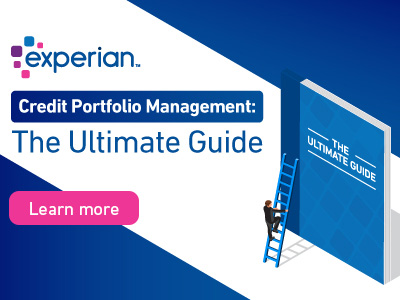
Feelings of uncertainty are emotions credit risk professionals know all too well after battling several months of COVID lockdowns, business closures, supply chain issues, and now geopolitical unrest added to the mix. Creativity and vigilance are now new norms for credit risk portfolio managers. Today’s business environment requires refreshed perspectives on how to identify and monitor avoidable risks and to reduce the impact of the unavoidable.
Understanding the foundations of Credit Portfolio Management
Credit Portfolio Management is the practice of managing and monitoring all aspects of your company’s credit portfolio. You can then proactively measure, track, and take action on emerging risks impacting your organization’s profitability. This includes understanding and measuring the impact on KPIs such as Days of Sales Outstanding (DSO), bad debt, disputes, and collections.
The power of Credit Portfolio Management lies in understanding your internal customer data to develop strong portfolio segmentation and treatment strategies. In your initial inventory of portfolio data, you may find your portfolios reside in different systems leading to information inconsistency. Alternatively, you may find information gaps in data leaving room for improvement. Those findings are common obstacles in establishing a portfolio baseline and are part of the initial evaluation step.
Instead of feeling overwhelmed with immediately fixing those problems, focus on uncovering the gaps to know how to prioritize efforts to make a meaningful impact on overall portfolio data integrity. With a strong understanding of your portfolio, you can begin building trends and take appropriate action to avoid potential problems down the road. Some actions include reviewing high-risk clients or increasing credit lines on low-risk high potential accounts. Portfolio Management practices often use analytics through the use of predictive credit risk and fraud scores which help spot future risks before it’s too late.
Getting Started with Credit Portfolio Management
The first step to effective Portfolio Management is taking an inventory of your portfolio and establishing a performance baseline. Your institution may have one or many portfolios based on how your organization structures its lines of business and products, and baseline performance may vary across these products.
Having a solid understanding of your customer data and what information is available to you helps determine what type of insights you can derive before you go outside looking for external data sources to use to standardize or augment your own internal data. For example, many institutions use industry classifications like the NAICS (North American Industry Classification) or SIC Codes (Standard Industry Classification) to group similar businesses to assess industry risk and benchmark customer performance against their peers.
In your evaluation of portfolios, you may find data residing in various systems. Many companies already using an ERP (enterprise resource planning) system find it optimal to keep their Portfolio Management processes embedded in their current system. Then augment any data gaps with external data to increase the effectiveness of their programs. However, any changes or additions of outside data will likely require your technical team’s involvement when you’re working within your internal systems.
If you don’t have a full-featured ERP, or if tapping into technical resources requires some prioritization and planning, consider using Experian’s BusinessIQ website that allows organizations to import portfolio data, including your aging data, and track risks for their portfolios. You can manually import your portfolios with no IT involvement. Alternately, with some limited IT involvement, more progressive organizations use tip of the sphere solutions, such as Portfolio Integration, to set up automatic daily portfolio imports of your data into BusinessIQ. Once your portfolios are in BusinessIQ, you can use the website to track trends over time and set up alerts, so you are notified of credit changes occurring in the portfolio.
As you advance your techniques, you can begin increasing the sophistication of your portfolio management practices by introducing Portfolio Scoring, a process defined as appending credit scores and other credit risk data to all the accounts in your portfolio. Implementing ongoing Portfolio Scoring helps drive further automation into your Portfolio management program and can be used to benchmark your portfolio’s performance over time. Quarterly Portfolio Scoring is a standard industry best practice but will depend on your organization’s need for data refreshes on the portfolio. Since credit scores play a critical role in the portfolio scoring process, let’s break down the different types of credit scores and their uses.
Hitting it out of the park with credit scores
One of the simplest ways to introduce risk automation to your portfolio management process is by adopting a credit scoring strategy. Scores are statistical models intended to predict a specific credit event (e.g., delinquency, bankruptcy, default) by evaluating numerous data attributes simultaneously. The result is usually a statistical value (the business credit score) that can instantly measure and assess risk. Depending upon the type of score utilized, credit managers can use scores to benchmark against the general business population’s performance, a specific industry, or even a creditor’s very own portfolio.
Credit scores can be used both for new customer acquisitions and portfolio management. However, when using scores to evaluate risk on existing customers, you can combine them with your own internal aging and payment data to provide a complete 360 degree look into your portfolio performance. By appending risk scores in bulk to an entire portfolio of customers over time, clients can quickly identify analytical trends and apply score-based segmentation strategies to manage risk more effectively at both an account and portfolio level.
Types of Scores:
“Generic Scores” or “All-Industry Scores” are traditionally found on credit reports, and batch Portfolio Scoring data appends will calculate their value based on a sample of companies from the general business population across all industries. A generic score will continually benchmark the likelihood of payment risk, such as delinquency, default, and bankruptcy against the general business population. These scoring models provide an affordable, off-the-shelf solution to quickly and easily assess credit risk.
- Intelliscore Plus V3 – predicts the likelihood of business paying in a severely delinquent manner, defined as 91 days plus past due or bankruptcy, in the next 24 months. Payment history, public records, and other variables are used to predict future risk. Higher scores indicate lower risk.
- Financial Stability Risk Score V2 –predicts the likelihood of business bankruptcy or significant delinquency, defined as 75% or more of balances 91 days plus past due within the next 24 months.
- Small Business Financial Exchange Portfolio Management Score – predicts the likelihood of a small business going severely delinquent on a financial account within the next 12 months
- Small Business Credit Share – predicts the likelihood of 60+ delinquency on financial products (cards, loans, lines of credit and leases) over a 24-month performance period
- First Party Fraud Score – predicts the likelihood of a business committing first-party Fraud or defaulting on their first payment within the first 6 months from opening an account. Consumer data on the personal guarantor can also be utilized to provide maximized visibility into potential small business frauds.
- Commercial Recovery Score – predicts the likelihood of commercial recovery over the next six months
Many of the above scores come in two analytics flavors: Logistic Regression and Machine Learned. Experian’s developed off-the-shelf machine-learned scores are available in a standardized, regulator-friendly format. Machine-learned scores are easy to deploy across the customer lifecycle and offer a significant performance improvement, in many cases, double-digit lift over traditional scoring models. In many customer circumstances, Experian and other vendors recommend Machine Learned scores over Traditional Logistic regression models due to the lift in predictive performance.
Custom scores, or scores built based upon your own portfolio data, can also be built by engaging analytical and modeling experts to help increase predictiveness. This process includes an in-depth evaluation of your portfolio’s performance over several time periods to create a customized risk score based on your portfolio’s performance and your unique “bad” definition. Custom models require more upfront investment and an implementation runway but can provide a high return on investment.
Reports to Help You Decide – Comprehensive vs. Summarized
Between your quarterly Portfolio Scoring efforts, you may need to review a customer on a one-off basis. When making credit decisions about customers, you sometimes need only a summary of pertinent risk data. Other times, you need more detailed information to support your analysis. If you rely on a report that contains too much information, you waste time searching for what you need, especially if key points are buried deep. You also spend money on data you don’t need and won’t use, hurting your bottom line.
Experian makes it possible for you to select reports in a variety of formats, as well as access key data sets based on the specific information you need.
With Experian’s vast data sets, you can get the data needed for accurate Portfolio Management from a single source with a single inquiry, which is more efficient and cost-effective, particularly when it comes to managing small business risk. Experian offers a unique blend of consumer and commercial credit reports and scores, combining pertinent information in a meaningful manner for more accurate small business risk assessment.
Here are a few credit reports to consider when evaluating risk on existing customers:
- Premier Profile Report – The most popular and comprehensive report, the Premier Profile Report (PPR) provides a detailed look at all the data Experian has aggregated on a company, such as public record filings, firmographic information, payment data, and collection placements. It also displays the credit scores for the business, including the Intelliscore and Financial Stability scores, which will help understand the overall risk of the business based on their scores.
When it comes to Portfolio Management, the Premier Profile is ideal for more significant dollar transactions where you require the most comprehensive evaluation of the customer. It is important to note that new businesses, or businesses that have existed for less than one year, often have less commercial information available as they may rely more on their personal financials to fund their small business. This results in limited commercial information and may not supply a complete picture of risk to make an informed credit decision.
Fortunately, this report does support the ability to pull in both information on the business and owner to produce a blended view on the small business. Using blended combination reports, such as the Premier Profile and Business Owner Profile with Blended Intelliscore, is highly recommended at the time of account opening or when managing credit terms for small business customers.
- Intelliscore Plus Report (IP) – This report provides a summarized look at key data attributes associated with the business and Experian’s Intelliscore Plus model to help predict payment delinquency. A blended version of this report is also available, which can help layer on a summarized look at consumer credit data on the business’s owner. By focusing on just the key attributes and the Intelliscore Plus model, you can help reduce data costs, particularly at the time of an account review.
- Business Owner Profile (BOP) – This report offers a comprehensive look at the business owner’s personal credit, including a credit score that predicts the likelihood of consumer delinquency within the next 24 months. Aggregated information includes owner demographics, public record filings, and individual payment performance. You may consider running this report if the Premier Profile Report returns little information and you are concerned about understanding more about the owner’s personal credit history.
- Small Business Financial Exchange Report (SBFE Report) and Small Business Credit Share (SBCS Report) – These reports provide a comprehensive look at small business risk by including additional report content exclusively available to participating consortium members of the SBFE or SBCS consortiums. These consortium reports include expanded trade information geared toward financial loans, lines of credit and leases and provides unique risk insights into the financial health of a small business.
Establishing a Sound Credit Policy for Portfolio Management
Now that you understand the basics of data, scores, and other tools at your disposal, you can start increasing the automation of your Portfolio Management practice. For example, your finance and credit department likely already maintains a formal, written credit policy that defines risk to help your company stay profitable. These policies typically use some aspect of generic risk scores to help guide risk-based decisions when onboarding new accounts for credit limit recommendations or loan amounts and establishment of terms.
Written policies often address how you’ll treat existing customers for credit line increases or renewal time. Most existing customer policies will emphasize the customers’ internal payment performance data or DSO with your company and will put less weight on the generic risk scores. While more heavy concentration is placed on internal aging performance, credit risk managers often still rely on generic risk scores to ensure they’re not losing sight of how customers are keeping up with their credit obligations. In this digital transformation era, clients are looking for more automated means of improving processes; this includes automating portfolio account review practices.
The first step for automation is creating rules or developing a weighted scoring approach from your written credit policy to identify risks in the portfolio while maintaining compliance with your organization’s current policies. Credit scores are used for automating new account reviews, as they combine multiple credit data attributes into a single algorithm and provide an easy-to-understand risk level. In many automated policies, other risk attributes are used to help segment and establish the appropriate credit limits and terms. Internal aging data can be used to automate the account review process while integrating a balance of credit scores and other risk variables to speed up the account review process.
Through automation tools such as DecisionIQ, you can create scenarios to help achieve various organizational objectives. For example, suppose your goal is to automatically review customer credit limits every 12 months to reduce risk exposure on existing open credit terms. In that case, automated decisioning can take the annual review of applicants from weeks down to days.
- Sample Portfolio Size: 25,000
- 25,000/12 months=2,083 accounts to review per month
- 3 Credit Analysts
- 3 analysts divided by 2,083 reviews per month=694 reviews per month per credit analyst
- Hours by Analyst
- 694 reviews x 15 minutes each = 10,410 minutes or 173 hours per review per analyst. In a 40 hour workweek would take an analyst 4 weeks to complete.
The benefits are clear, automation of your credit policy for new account onboarding and existing customer account reviews can help credit managers gain significant time savings to deploy resources to more critical and strategic tasks.
Staying on Top of Things with Alerts
In addition to ongoing portfolio account reviews, credit managers are turning to proactive alerts to ensure you’ll never be caught off guard by a change in your customer’s payment behavior. Alerts, such as those available through Experian’s Account Monitoring Service, proactively monitor risk levels and inform you before they get out of hand. These alerts can help you know about critical issues before it’s too late, giving risk levels time to adjust accordingly and keep your company safe from financial loss. To create an alert, you set up a trigger, a specific event with parameters. Be discerning, though; it’s easy to get trigger happy and set up too many alerts, this can cause analysis paralysis, and significant events get lost in all the noise.
Some typical alerts implemented in Portfolio Management programs include:
- Tracking credit score decreases
- Monitoring for new Bankruptcy filings
- Obtaining Late Payment alerts when your customers pay other vendors slow
- New Collection account placements when creditors send your customer to 3rd party collections.
Several Experian analytics studies have been conducted to identify which Account Monitoring Service triggers in our suite of 99 events are most predictive in identifying future bad customer behavior. Experian can use insights from these analytical studies to help you be vigilant when setting up an alerts program to ensure the proper notifications are in place, balancing credit analysts’ productiveness and driving a more meaningful ROI.
Collecting Outstanding Debt with Collections Prioritization
If all prior efforts to manage and mitigate customer delinquencies have proven to be unsuccessful, using an accurate and intelligent collection model can significantly increase your ability to collect outstanding debt and improve the cash flow of your business. Many customers will pay their debts in response to simple collection methods, such as calls, emails, and letters. However, your business has limited time and resources on hand. Suppose you spend significant time working with a customer who will not repay a debt regardless of the offers or efforts. In that case, you lose out on revenue from customers who very likely will pay with simple outreach. Also, many customers will pay their debts given time, regardless of the collection method employed. By identifying which customers will self-cure, you can focus on the customers who need active prompting to pay their debts.
To help with this challenge, Experian developed a Commercial Recovery Score (CRS) that can predict the likelihood of recovering on a commercial debt over the next six months. By appending the Commercial Recovery Score in bulk to an entire portfolio of customers, you can quickly and easily prioritize your collection efforts and apply score-based segmentation strategies to help align the proper treatment methods.
For example, if a customer has a high score indicating that they are likely to pay, your first collection step may be a friendly reminder letter instead of an ultimatum phone call. Using the right approach for the situation makes you more likely to achieve both your goals – enabling prompt payment while maintaining a good customer relationship for the future.
One other thing to consider is that late payments can be due to a simple error, such as a lost bill or the customer forgetting to change their address when moving. Experian also helps with these challenges by providing alternate contact information (addresses, phone numbers, contact names), which helps collect the bill without paying expensive fees to a 3rd party collections agency or legal entity.
Is it Fraud or Bad Debt?
When you see late payments, do you see a delinquent customer, or do you see Fraud? Non-payment is the first signal of potential Fraud, especially on a new account. When fraudulent accounts are opened to never repay, this is referred to as first-party Fraud. Fraud impacts your DSO; therefore, quickly determining which delinquent accounts are likely Fraud can reduce your risk and your DSO.
Introducing scores, such as Experian’s First Party Fraud score at the time of account origination, helps protect you from opening new fraudulent accounts, reducing risk, costs, and improving the customer experience by differentiating fraud types to apply the right type friction. For ongoing Portfolio Management, leveraging this score over time via Portfolio Scoring can help you ensure less of your delinquencies are coming from bad actors.
Moving forward with Credit Portfolio Management
Organizations that implement successful Portfolio management practices see significant results – increased portfolio efficiencies, higher profit margins, lower write-offs, and reduced frauds. Changing your existing portfolio management practice does not have to be an overnight transition. By combining minor, incremental improvements with the correct data, processes, and technology, you’ll begin paving a path to modernizing your realistic and sustainable portfolio.
Take the next step
Reach out to Experian to strengthen your Portfolio Management practices today.

Four risk scoring options to modernize approvals
Risk Scoring is often a critical first step for any business attempting to modernize its credit approval process. The process can feel daunting, especially if you’re new to basic automation principles and scoring concepts. In this session, Erikk Kropp reviews a best practice framework aimed at helping businesses modernize their credit approval process.

